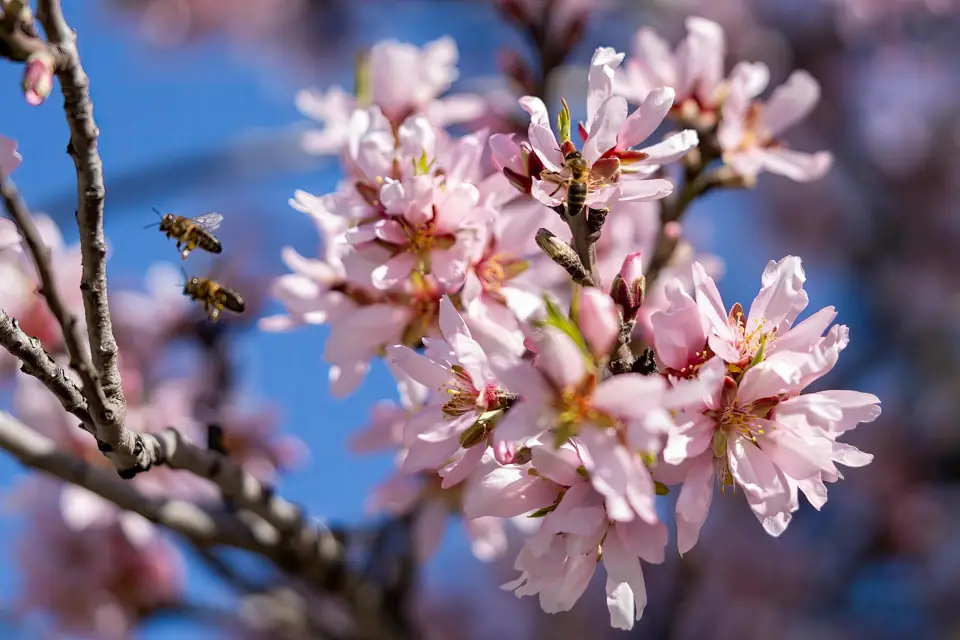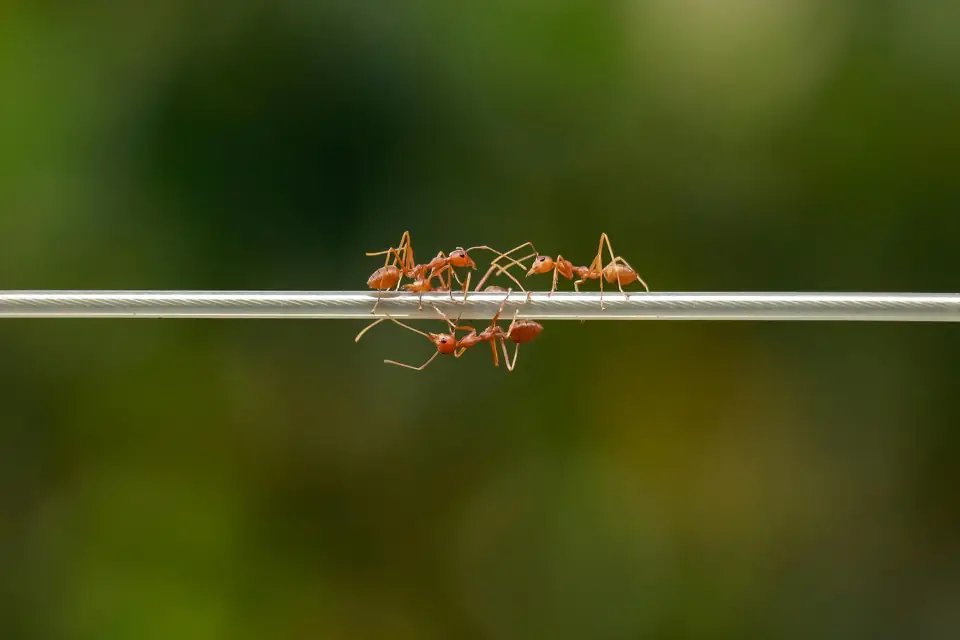Table of Contents
In the hidden corners of our natural world, insect societies thrive with an intricate level of organization and cooperation that rivals even the most complex human communities. These mini societies not only fascinate scientists and nature enthusiasts alike but also inspire technological innovations and ecological strategies. In this article, we explore the extraordinary realm of insect societies, examining their organization, communication, ecological benefits, and the challenges they face in our rapidly changing world.

What Are Insect Societies?
Insect societies refer to the structured communities formed by social insects such as ants, bees, termites, and wasps. These communities are characterized by a division of labor, cooperative brood care, and overlapping generations that work together toward common goals. The term insect societies encapsulates not only the social behavior of these species but also the dynamic interactions that allow them to thrive in diverse environments.
Social insects have developed complex systems that enable them to:
- Build and maintain elaborate nests or hives.
- Divide tasks among various castes, ensuring that each member contributes to the survival of the colony.
- Communicate effectively to coordinate activities ranging from foraging to defense.
- Queens: The reproductive heart of the colony. In many cases, the queen is the only member capable of laying eggs, ensuring the continuity of the society.
- Workers: The backbone of the colony. These individuals are responsible for foraging, nest maintenance, and caring for the young.
- Soldiers or Drones: In some species, specialized castes exist for defense or reproduction. For example, drones in bee colonies serve the specific purpose of mating with queens.
Understanding these systems provides insight into both the natural world and potential technological applications inspired by these organized communities.

Structure and Organization of Insect Societies
At the heart of insect societies lies a highly efficient structure that assigns specific roles to each member. The division of labor within these societies is essential for their survival and efficiency. Let’s take a closer look at some of the key elements:
A. Caste Systems and Role Specialization
Many social insects organize themselves into castes that perform distinct functions:
This caste system allows insect societies to allocate resources efficiently and adapt quickly to environmental challenges. The clear hierarchy and role differentiation are prime examples of nature’s ability to engineer effective collective behavior.
B. Internal Cooperation and Collective Decision-Making
Insect societies operate on the principle of collective decision-making. Even without a central command, these mini societies demonstrate an extraordinary ability to solve complex problems collectively. Whether it’s choosing a new nesting site or coordinating a foraging expedition, the decisions made by these communities are the product of thousands of small interactions and feedback loops.
For further insights into nature’s ingenious problem-solving strategies, check out our post on 15 Animals That Have Inspired Technology.

Communication and Coordination in Insect Societies
Effective communication is the linchpin of any successful society, and insect societies are no exception. These tiny architects of nature have developed unique methods to relay information and coordinate group behavior.
A. Chemical Signals and Pheromones
Pheromones are the chemical messengers that enable insects to communicate. In ant colonies, for example, trails of pheromones guide fellow workers to food sources and alert them to potential dangers. This chemical communication is not only rapid but also highly effective, ensuring that the entire colony can respond to environmental cues almost instantaneously.
B. Visual and Auditory Cues
While chemical signals are predominant, some insects also use visual cues. Honeybees, for example, perform the famous “waggle dance” to communicate the direction and distance of food sources. This behavior exemplifies how insect societies leverage both visual and kinetic signals to achieve coordination.
For more on how animals navigate and communicate their environment, you might enjoy reading Animal Navigation: Fascinating Wonders of Instinctual Guidance.
C. Vibrational Communication
Certain insect species rely on substrate-borne vibrations to exchange information. This method is especially useful in dense colonies where visual or chemical signals might be less effective due to environmental constraints.
Throughout these communication strategies, the term insect societies emerges as a testament to the sophistication of collective behavior that underpins these communities.

Ecological Impact and Benefits of Insect Societies
Insect societies play a crucial role in maintaining the balance of ecosystems. Their activities have far-reaching effects on the environment, from pollination to soil aeration.
A. Pollination and Plant Reproduction
Bees, as a prime example of social insects, are responsible for pollinating a vast array of plant species. Their organized foraging behavior not only supports agricultural productivity but also enhances biodiversity. The cooperative nature of bee colonies demonstrates how insect societies contribute directly to the health of ecosystems worldwide.
B. Soil Health and Nutrient Cycling
Ants and termites are also significant players in nutrient recycling. Their nest-building and foraging activities help aerate the soil and break down organic matter, leading to improved soil fertility. These actions, performed collectively by insect societies, underscore the interconnectedness of all life forms within an ecosystem.
C. Natural Pest Control
Insect societies such as those formed by ants and wasps can act as natural pest controllers. By preying on harmful insects and balancing populations, these societies help maintain ecological equilibrium. Their role in natural pest control highlights another layer of the ecological benefits provided by well-organized insect communities.
For a broader perspective on nature’s remarkable abilities, you might also be interested in Animal Superpowers: 10 Incredible Abilities in the Wild.

Challenges Faced by Insect Societies in a Changing World
Despite their resilience, insect societies are not immune to the challenges posed by modern environmental pressures.
A. Climate Change and Habitat Loss
Rising temperatures, altered weather patterns, and habitat destruction are taking a toll on many insect species. As the delicate balance of these mini societies is disrupted, the efficiency and survival of these communities are put at risk. Research shows that even slight changes in environmental conditions can have cascading effects on insect societies.
B. Pesticides and Chemical Pollution
The widespread use of pesticides has a particularly detrimental impact on social insects. Chemicals designed to target pests can inadvertently harm beneficial insect societies, leading to reduced populations and weakened colony structures. This not only affects the insects themselves but also the broader ecosystems that rely on their services.
C. Invasive Species and Disease
Invasive species and emerging pathogens pose additional threats. Invasive species can outcompete native insects for resources, while diseases can spread rapidly within densely populated colonies, undermining the very foundations of insect societies.
Understanding these challenges is critical, not just for conservation efforts but also for appreciating the resilience and adaptability of these communities.

Lessons from Insect Societies: Inspirations for Innovation
The study of insect societies has far-reaching implications beyond ecology. Scientists and engineers are increasingly drawing inspiration from the collective behavior of social insects to solve human problems.
A. Swarm Intelligence in Robotics and Computing
Swarm intelligence, derived from the study of insect societies, has led to innovative approaches in robotics and computer algorithms. By mimicking the decentralized decision-making processes of ants and bees, researchers are developing more efficient methods for data processing, logistics, and even disaster response strategies.
B. Biomimicry in Design and Architecture
The intricate structures built by insect societies have inspired biomimetic designs in architecture and engineering. From the self-cooling mounds of termites to the efficient foraging patterns of ants, these natural blueprints are being adapted to create sustainable and resilient human environments.
For more examples of nature inspiring modern technology, take a look at our post on 15 Animals That Have Inspired Technology.
C. Lessons in Cooperation and Resilience
Perhaps one of the most profound lessons from insect societies is the value of cooperation. In a world where individualism is often emphasized, the collective efforts of these tiny creatures remind us that collaboration and mutual support can lead to remarkable achievements. The resilience of these societies in the face of environmental challenges offers valuable insights into sustainable living and community building.
Conclusion
Insect societies represent one of nature’s most sophisticated forms of social organization. Through advanced communication, division of labor, and cooperative decision-making, these communities exemplify how collective behavior can lead to extraordinary outcomes. From their essential role in pollination and pest control to the innovative inspirations they provide for technology and design, the impact of insect societies is both profound and far-reaching.
As we continue to navigate a world of rapid environmental change, the lessons drawn from these mini societies offer hope and guidance. By protecting and understanding these intricate networks, we not only preserve the natural world but also unlock new potentials for innovation and sustainability. The next time you observe a busy ant trail or the mesmerizing dance of a bee, remember that you are witnessing a living example of nature’s brilliance in organizing life.
F. A. Q. about Insect Societies
What exactly are insect societies?
Insect societies refer to organized communities formed by social insects, such as ants, bees, termites, and wasps. These groups exhibit a high degree of cooperation, division of labor, and complex communication systems, making them fascinating examples of natural organization.
Which insects are considered the most social?
Ants, bees, termites, and certain wasps are among the most social insects. Each of these species forms colonies with specialized roles—such as queens, workers, and soldiers—that work together to ensure the colony’s survival.
How do insects communicate within their societies?
Social insects use a variety of communication methods. Chemical signals (pheromones) are commonly used, especially in ant colonies, while bees employ visual cues like the waggle dance. Some species also use vibrational signals to coordinate activities within their communities.
What ecological benefits do insect societies provide?
Insect societies contribute to a range of ecological services. Bees play a crucial role in pollinating plants, while ants and termites aid in soil aeration and nutrient recycling. Additionally, these insects help control pest populations, thereby maintaining ecological balance.
How can we support and protect insect societies?
Supporting insect societies involves protecting their natural habitats, reducing pesticide use, and promoting biodiversity-friendly practices. Creating pollinator-friendly gardens and advocating for sustainable agricultural practices are effective ways to help preserve these essential communities.
By exploring the inner workings of insect societies, we gain a deeper appreciation for the complexity and resilience of nature’s smallest architects. Their ability to coordinate, communicate, and cooperate offers both inspiration and practical lessons for addressing the challenges of our modern world. Embrace the wonder of insect societies, and let them remind you that even the smallest creatures can have a mighty impact.


